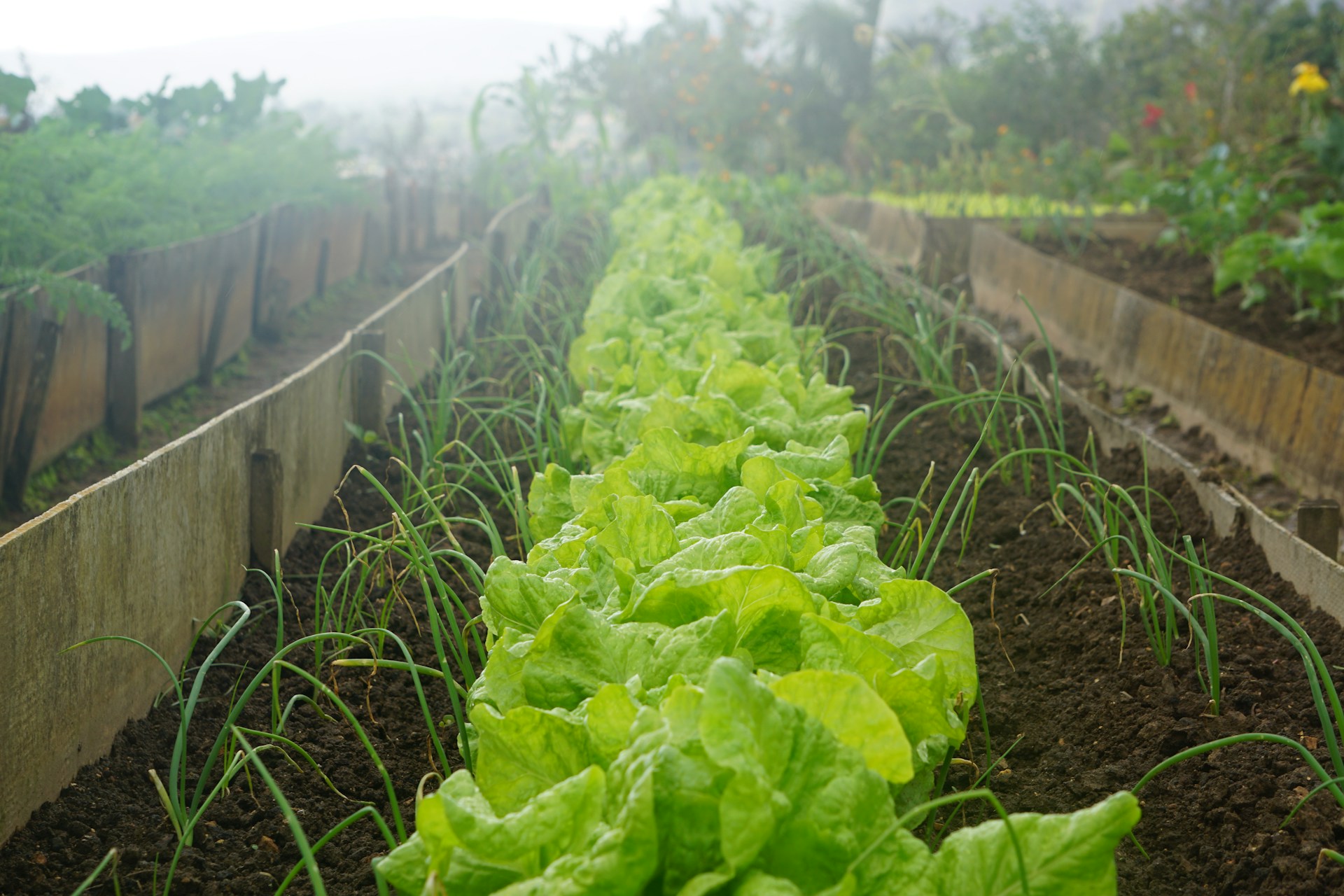In the Southeast and Mid-Atlantic, we enjoy a fairly long growing season, but fall always creeps up on us fast. In the zone 7a gardens at Southern Exposure, we’re already starting cauliflower for our fall garden. As you’re planning and planting fall crops, these are some things to consider.
Understand Your Timeline
A long growing season means that you can start multiple successions of quick summer crops throughout the summer like zucchini, bush beans, sweet corn, and zinnias. You can also plant cool season crops like cabbage, cauliflower, carrots, and spinach in spring and then again in fall.
How late you can continue to plant these crops is determined by two factors: your first estimated frost date and the day length.
This first frost date is a hard cut off for frost-tender crops like summer squash, but you have a bit more flexibility with hardy crops like collards and beets. The shortening days in late summer and fall will affect each crop’s days to maturity.
To calculate how late you can last a crop, you need to take both factors into account. To begin, find your variety’s days to maturity. Then add 14 days if you’re direct sowing or 14 to 28 days for transplanting. This addition accounts for slower growth during the shorter days of autumn. Last, take your total number and count backwards from your first frost date. This is your last possible planting date.
Many cold hardy crops will grow into winter in cold frames, high tunnels, or low tunnels. Just keep in mind that as the temperatures continue to drop and the days get even shorter, their growth will slow or stop. Young cold-hardy crops kept through the winter will begin growing in late winter in spring for and early harvest.
Bed Prep and Summer Cover Crops
If you want to maximize production from your garden, it’s important to pull spring and summer crops when they’re no longer productive. When lettuce bolts, the vine borers overtake the zucchini, and the bean production drops, pull the plants and prep the bed for a new crop or cover crop.
You should also remove any weed and other debris and pull back mulch. Add a couple of inches of finished compost to the bed.
After preparing the bed, you can plant another crop or a cover crop. Summer cover crops like sunn hemp, buckwheat, and soybeans can revitalize the soil for another vegetable crop later or grow for the rest of the season to help build up organic matter.
To choose a cover crop, read our post Summer Cover Crops.
If you’re already plenty busy with summer garden crops like tomatoes and squash, it’s perfectly fine to put empty beds into cover crops for the rest of the season. Building soil for next season is more productive than planting more crops that you don’t have the time or energy to manage.
Selecting Crops
While ‘days to maturity’ is the key feature when selecting fall crops, it’s not the only thing to consider. Some crops have been bred to hand the hot days of summer, the dwindling light of autumn, or the cold snaps of approaching winter.
For example, lettuces like Capitan Bibb and Jericho Romaine lettuce, which were bred for heat tolerance, are a good choice for late summer. Some fall crops like Snowball Self-Blanching Fall Cauliflower will even say it in the name. This variety offers self-wrapping leaves that protect the white curds from heat and sunlight during late summer or early fall.
Crops bred for cold hardiness like Champion Collards and Gigant Winter Kohlrabi will help you extend your growing season into winter. Quick growing crops like Cherry Belle Radishes allow you to squeeze in a last-minute harvest even with shorter days.
Direct Sowing Crops for Fall
In hot conditions, direct sowing can be tricky, especially with cool weather crops like lettuce, cabbage, carrots, and rutabagas. To have success, you want to keep the soil cool and moist. Here are a few quick tips when direct sowing:
- Use shade cloth.
- Lay boards of cardboard over the soil, but check every day and remove it as soon as they germinate.
- Water consistently.
- Use overhead watering for crops like carrots, which are sensitive to soil crusting.

Starting Transplants for Fall
Starting transplants can be easier than direct sowing, because you have more control over the environmental conditions, including moisture level and soil temperature. Cool weather crops like lettuce, cabbage, cauliflower, broccoli and kohlrabi germinate well in relatively cool, moist soil.
For example, most lettuce germinates best around 75°F but will germinate at temperatures as low as 40°F. Rather than direct sow them or sow them in flats outdoors, we start our fall lettuces indoors and place the flats into the refrigerator for 4 to 6 days.
If you don’t have space in your fridge, you could try another area that stays cool, like a root cellar. Monitor them; they need light once they germinate!
Use Mulch
When planting and growing in the heat of summer, keeping the soil cool and moist is key for good growth and production. Placing a thick layer of mulch on the soil after watering will help hold the moisture in and insulate the soil.
You can use wood chips, grass clippings, straw, or old leaves to mulch. Mulch as close to the base of plants as possible, but don’t cover them. Wait to mulch direct sown crops until they’re a couple of inches tall.








